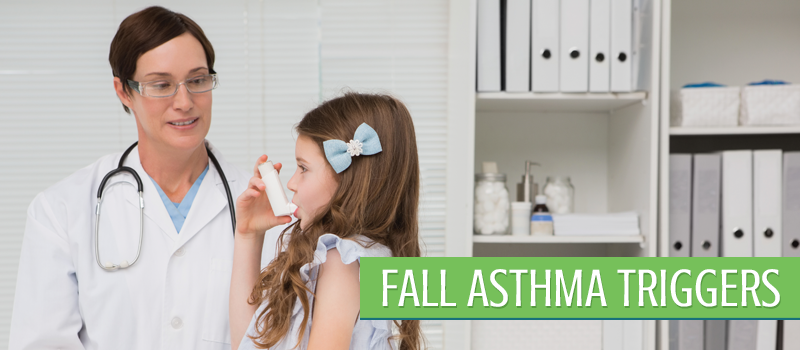 The changing of the seasons means playing in leaves, trick-or-treating and enjoying fall sports such as football and soccer. For some kids, it may also mean breathing difficulties. Asthma can flare up in autumn months, so keep an eye out for common fall asthma triggers to keep your young ones out of urgent care.
The changing of the seasons means playing in leaves, trick-or-treating and enjoying fall sports such as football and soccer. For some kids, it may also mean breathing difficulties. Asthma can flare up in autumn months, so keep an eye out for common fall asthma triggers to keep your young ones out of urgent care.
- Temperature Changes: Autumn months see wide swings in temperatures. Most patients know that cold air bring on an attack, but the quick drops from warm to cold make fall particularly tricky: Chilly nights can come on fast, and in some cases, be more difficult to deal with than consistently chilly air.
- Fireplace/Campfire Smoke: When plans to stay warm including huddling around a backyard fire pit or snuggling in front of a fireplace, asthmatics should be careful. Smoke’s a common trigger, whether it’s from summer forest fires or autumn campfires.
- Mold: Colorado’s dry climate is forgiving to kids with mold allergies, but it’s still present – and more so in fall than summer. Keep windows closed on high-mold allergy days.
- Clothing: Are you pulling jackets, sweaters and long pants out of storage? If so, consider washing them before use. Stored clothing tends to gather dust, especially when tucked away in the attic or basement, than clothes in normal use, which can lead to allergy-related asthma attacks.
- Forced Air Heating: Turning on the furnace for the first time is likely to stir up dust, mold and pollen that collected in duct work and around vents. Vacuum around heat registers to minimize airborne dust. Make sure to swap out furnace filters every month to keep allergens under control through the cold months.
- Fallen Leaves: They’re a blast to rake into piles and jump into, but they’re also a great place for mold to grow. Limit play in leaves for asthmatics, and always change clothes after coming in from leaf play so mold doesn’t hitch a ride on kids’ shirts, pants and jackets.
- Seasonal Illnesses: Colds and influenza are known fall asthma triggers, so closely monitor any sick asthmatics to keep pulmonary health in check. Of course, minimize your risk by frequently washing hands, covering your face when you cough or sneeze and receiving flu shots from your primary care provider.
Autumn sees an increase in pulmonary problems, but you can help your child manage her condition with awareness of common fall asthma triggers.

